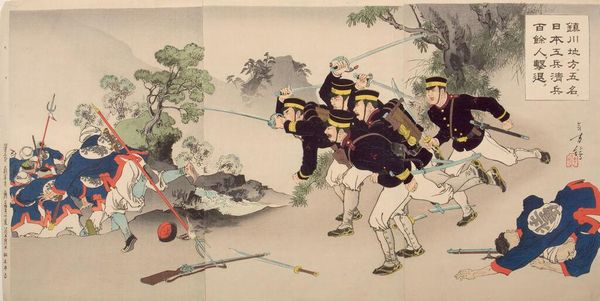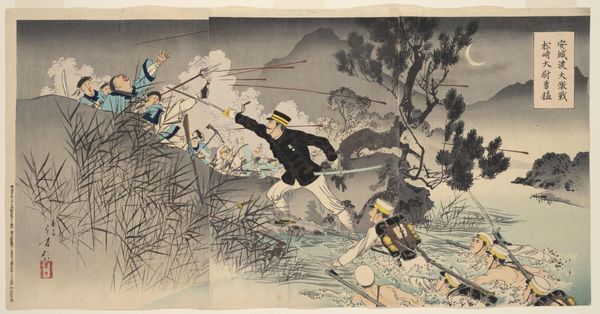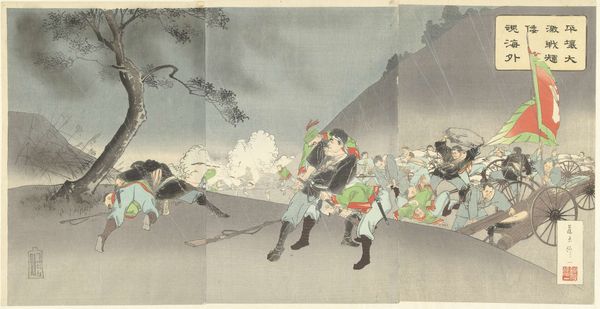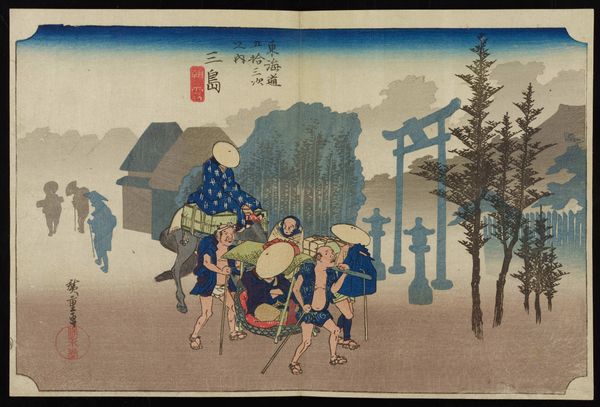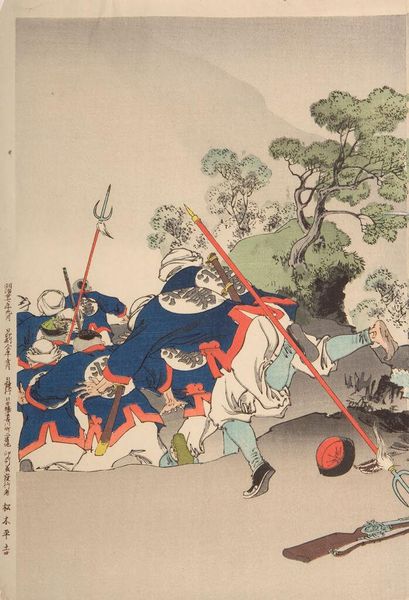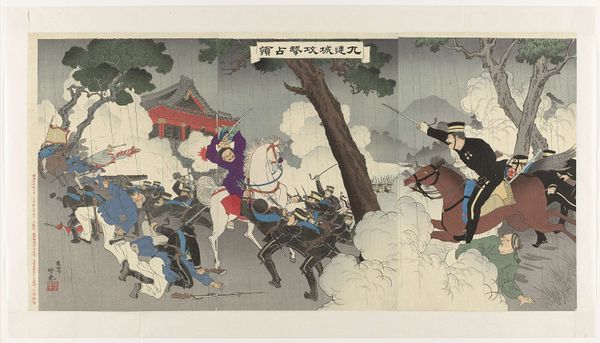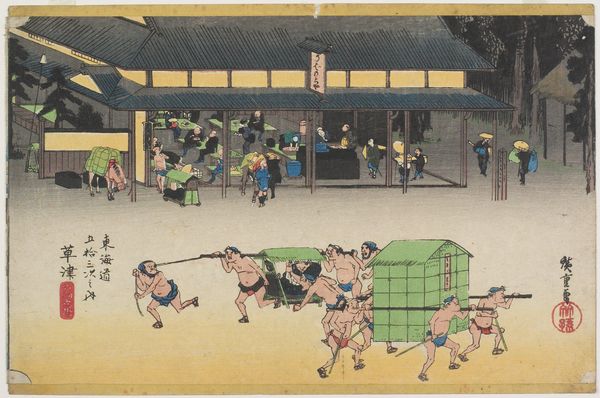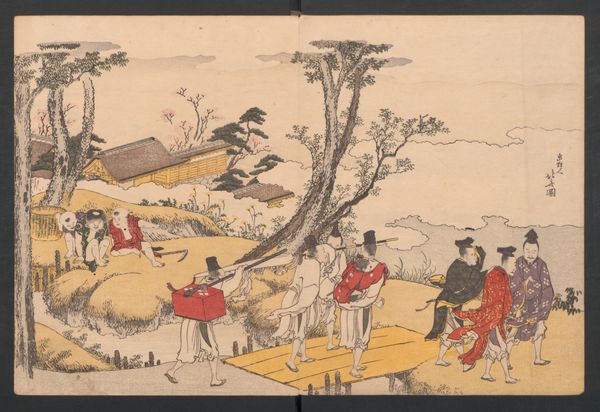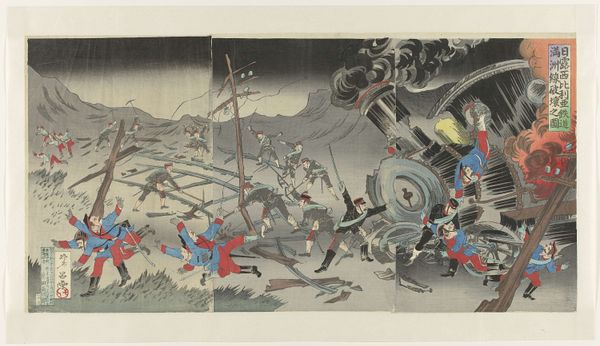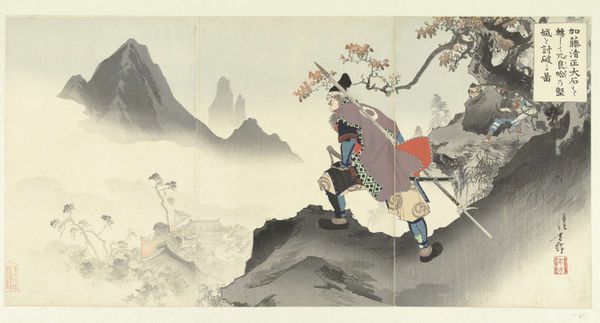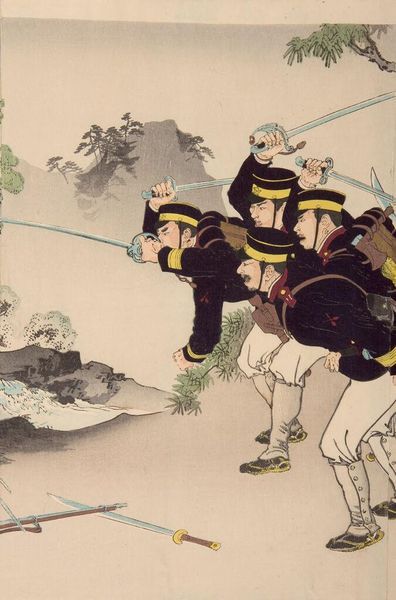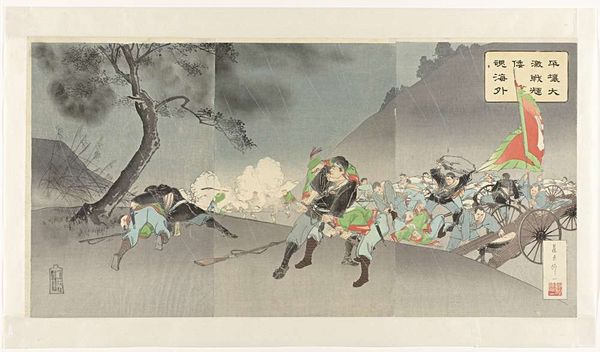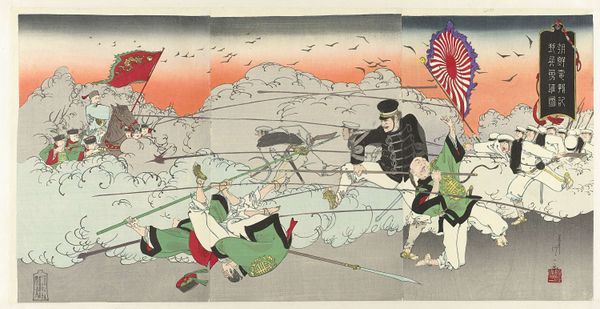
In de Chinchon regio verdrijven vijf militaire ingenieurs meer dan honderd Chinese soldaten 1894
0:00
0:00
mizunotoshikata
Rijksmuseum
Dimensions: height 359 mm, width 735 mm
Copyright: Rijks Museum: Open Domain
"In the Chinchon region five military engineers drive out more than one hundred Chinese soldiers" is a print made by Mizuno Toshikata. This print depicts a scene from the Sino-Japanese War, a conflict rooted in competing imperial ambitions in Korea. Toshikata's work is a fascinating example of how art can function as both a historical record and a form of nationalist propaganda. What do we make of the figures? The Japanese soldiers are depicted as disciplined and technologically advanced, while the Chinese are shown as a disorganized mass. This representation highlights the racial and cultural biases prevalent during the Meiji era, where Japan sought to establish itself as a modern, imperial power. The print also reflects Japan's rapid industrialization and military modernization during this period, contrasting it with China's perceived backwardness. Consider how these historical power dynamics shape our understanding of the artwork. Does it celebrate military triumph, or does it prompt reflection on the human cost of conflict and the complexities of national identity?
Comments
No comments
Be the first to comment and join the conversation on the ultimate creative platform.
